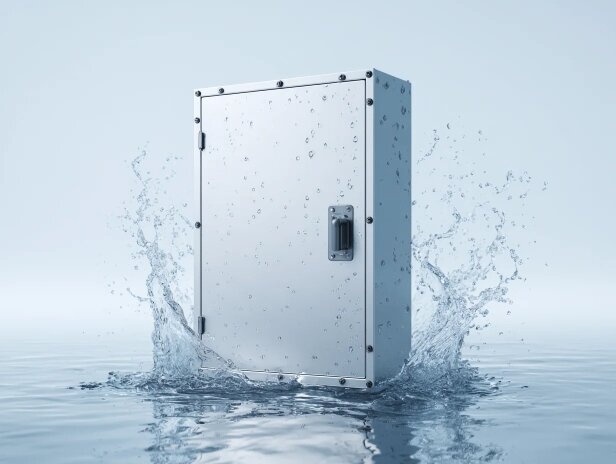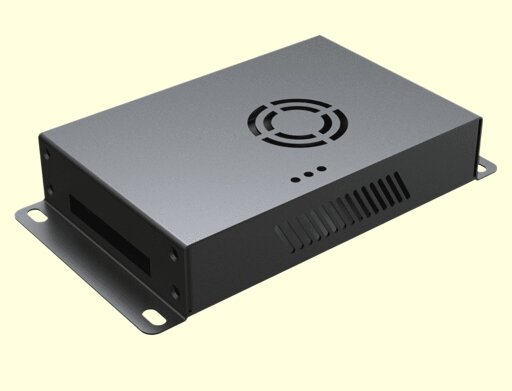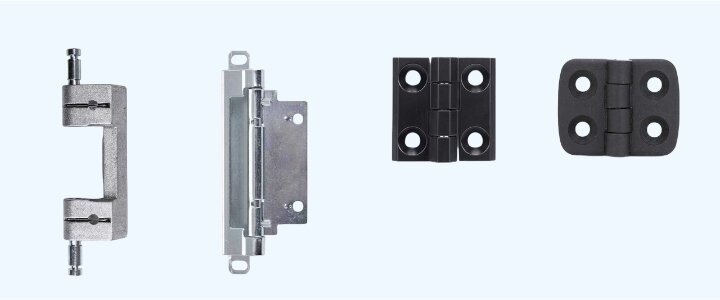De nombreux ingénieurs et chefs d'atelier sont confrontés à des problèmes tels que des formes de filets irrégulières ou la nécessité d'utiliser des tailles de filets spéciales. Cela devient encore plus difficile lorsque les outils standard ne peuvent pas résoudre le problème. Mais apprendre à utiliser le filetage monopoint peut s'avérer utile. Il vous permet de mieux contrôler le processus. Vous pouvez couper les filets en fonction de vos besoins exacts.
Le filetage monopoint vous permet de réaliser des filetages personnalisés, d'ajuster les profils et de répondre à des spécifications précises. Ce guide décrit le processus, explique son fonctionnement et présente les meilleures pratiques.
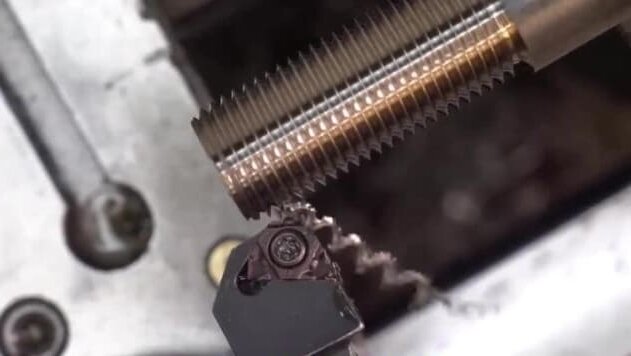
Qu'est-ce que le filetage à point unique ?
Le filetage monopoint est une méthode qui utilise un outil de coupe pour créer des filets sur une pièce. Il utilise un outil ayant la forme du profil du filet. Lorsque la pièce tourne sur un tour, l'outil se déplace le long de la pièce et coupe le filet. Cette coupe s'effectue lentement et par étapes.
Cette méthode est standard sur les tours manuels et les tours à main. Tours CNC. Il peut réaliser des filetages à l'extérieur ou à l'intérieur d'une pièce. L'un de ses principaux avantages est le contrôle. Vous pouvez choisir la taille, la forme et le pas du filet en fonction de votre conception.
Dans ce processus, l'outil ne coupe pas tout le fil en une seule fois. Il effectue plusieurs passages. À chaque passage, l'outil s'enfonce un peu plus profondément. Cette opération se poursuit jusqu'à ce que le filet atteigne la profondeur finale. Ce procédé est différent de celui des tarauds ou des filières, qui coupent les filets en une seule étape.
Le filetage à point unique est également flexible. Vous pouvez facilement modifier la taille ou la forme du filet. Il est donc idéal pour les pièces personnalisées, les travaux de réparation ou les petites séries. Il fonctionne bien lorsque vous avez besoin de filetages spéciaux ou d'un ajustement serré. Il vous permet également de mieux contrôler la qualité et la précision.
Types de fils créés
Le filetage à point unique vous permet de créer de nombreux types de filets. Il convient pour les spécifications personnalisées ou lorsque vous devez respecter des normes de filetage spécifiques. Cette section en donne un aperçu.
Filets internes et externes
Les filets extérieurs sont coupés à l'extérieur d'une pièce, comme sur les boulons ou les arbres. L'outil de filetage se déplace le long du diamètre extérieur de la pièce en rotation - l'outil coupe progressivement jusqu'à ce que la forme complète du filet soit atteinte.
Les filets internes sont coupés à l'intérieur des trous, comme dans les écrous ou les boîtiers. Cela nécessite un outil plus petit avec le même profil. C'est plus difficile parce que l'outil travaille à l'intérieur d'un alésage, ce qui limite l'espace et la visibilité.
Les deux types de filets nécessitent un alignement et un contrôle de la profondeur minutieux. Des erreurs de réglage ou de trajectoire de l'outil peuvent affecter l'ajustement ou la résistance du filetage.
Normes du fil conducteur
Les normes de filetage varient d'une industrie à l'autre. Le filetage à point unique vous permet de couper presque tous les types de filets, à condition que l'outil et la machine soient correctement réglés.
Filets métriques
Les filetages métriques sont largement utilisés dans le monde entier. Ils sont mesurés en millimètres. Les valeurs centrales sont le diamètre primaire et le pas, la distance entre les filets.
Par exemple, M10 × 1,5 signifie que le filet a un diamètre primaire de 10 mm et un pas de 1,5 mm. Les filetages métriques sont conformes aux normes ISO, ce qui garantit leur cohérence d'un fournisseur à l'autre.
Norme unifiée de filetage (UTS)
L'UTS est courante aux États-Unis. Il utilise les pouces au lieu des millimètres. Le pas est souvent indiqué en filets par pouce (TPI).
Par exemple, un filet UNC 1/4-20 signifie un diamètre de 1/4 de pouce et 20 filets par pouce. UNC signifie "Unified Coarse Thread" (filetage grossier unifié). Il existe également l'UNF (Fine) et l'UNEF (Extra Fine).
Chaque norme a ses propres règles en matière de pas, d'angle et de profondeur. L'outil de filetage doit correspondre exactement à la forme et à la taille.
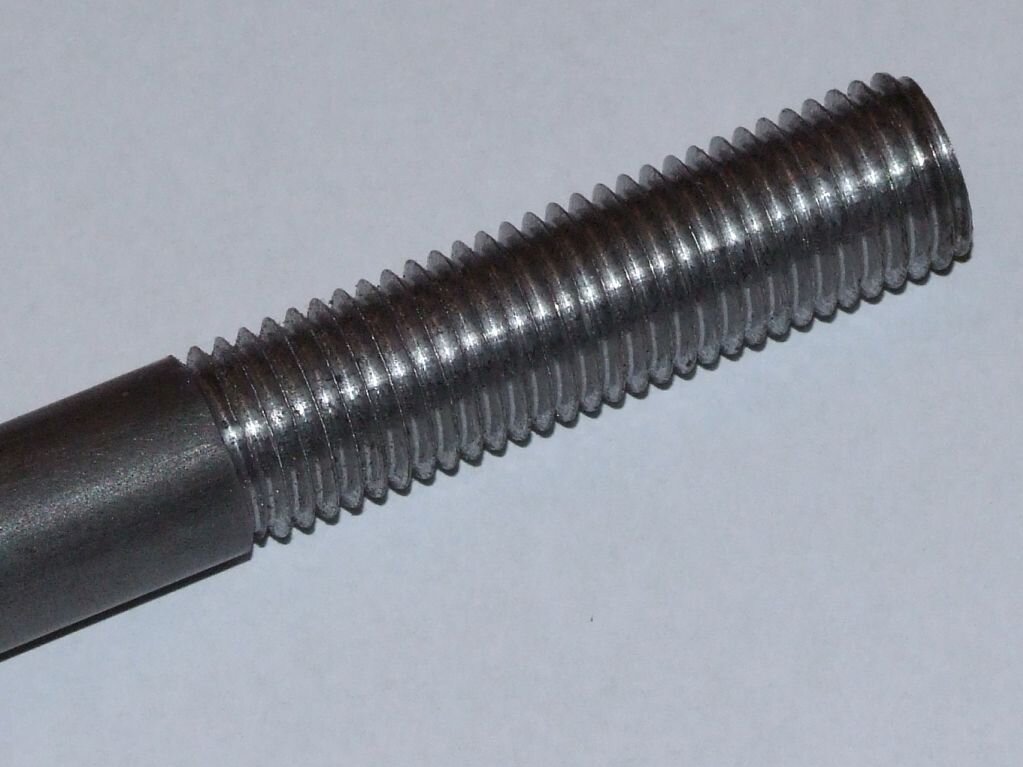
Outils et équipement pour le filetage à point unique
Pour réaliser un filetage monopoint, il faut disposer des machines et des outils de coupe adéquats. La configuration dépend du type de fil, du matériau et de la précision du résultat.
Les tours et leur rôle
Le filetage monopoint s'effectue toujours sur un tour. Le tour fait tourner la pièce tandis que l'outil de coupe se déplace en ligne droite le long de celle-ci. Ce mouvement combiné crée le filet.
Les tours manuels utilisent une vis d'entraînement et des engrenages pour adapter le pas de filetage. L'opérateur règle les engrenages ou compose la vitesse d'avance correcte. Les tours à commande numérique effectuent cette opération automatiquement grâce à des réglages programmés. Ils sont plus rapides et plus reproductibles.
Types d'outils de filetage
L'outil d'enfilage effectue la coupe. Il possède un bord tranchant qui correspond à la forme du fil. Les types les plus courants sont les suivants :
- Outils HSS (High-Speed Steel): Idéal pour les petits travaux et les matériaux tendres. Vous pouvez les meuler dans de nombreuses formes.
- Plaquettes en carbure: Utilisés pour les matériaux plus durs ou les longs tirages. Ils durent plus longtemps et donnent une meilleure finition de surface.
- Barres d'alésage: Utilisés pour couper les filets intérieurs. Ils se placent à l'intérieur des trous et ont la forme d'outils de filetage.
Géométrie des outils et types de plaquettes
Les outils de filetage ont des formes spécifiques appelées géométries. Les principales caractéristiques sont les suivantes
- Profil du fil: Correspond à la forme du filetage. Par exemple, une forme en V de 60° pour les filetages métriques ou UNC.
- Rayon du nez: Une petite pointe arrondie qui contrôle la forme de la crête du fil. Trop pointue, elle peut s'écailler ; trop ronde, elle peut brouiller les détails.
- Angle de décharge: Empêche l'outil de frotter le matériau pendant la coupe.
Processus de coupe de fil à point unique, étape par étape
Le filetage nécessite une préparation minutieuse et un contrôle régulier. Suivez cette séquence pour éviter les erreurs et les dommages à l'outil.
Étape 1 : Préparation de la pièce et de la machine
Commencez par vérifier la taille et le matériau de la pièce. Assurez-vous qu'elle est ronde, propre et bien serrée dans le mandrin. Si la pièce oscille, le filetage ne sera pas précis.
Nettoyez le tour et vérifiez le jeu de l'outil. Enlevez les copeaux et réglez la machine à la bonne vitesse. Utilisez des vitesses plus lentes que pour un tournage normal.
Étape 2 : Choisir les bons paramètres du fil
Déterminer le pas, le diamètre et la forme du filetage. Ceux-ci dépendent du dessin ou de la conception de la pièce. Assurez-vous que votre outil correspond au profil du filet.
Réglez la vitesse d'avance en fonction du pas de filetage. Par exemple, pour un pas de 1,5 mm, l'outil doit se déplacer de 1,5 mm par tour de broche.
Si vous utilisez un tour à commande numérique, entrez tous les paramètres du filetage dans le programme. Vérifiez une nouvelle fois la précision du code.
Étape 3 : Installation et alignement de l'outil
Montez l'outil de filetage dans le porte-outil. L'arête de coupe doit faire face à la pièce et être à la hauteur du centre. Utilisez une jauge de centrage pour aligner l'outil à l'angle correct, généralement 60° pour la plupart des filetages.
Assurez-vous que l'outil est bien serré. Tout mouvement affectera la forme du fil.
Étape 4 : Réglage de la référence du zéro
Approchez l'outil de la pièce. Touchez la surface et réglez le zéro de l'axe X. Ensuite, reculez légèrement et placez le point de départ de l'axe Z. Ensuite, reculez légèrement et placez le point de départ de l'axe Z.
Cette référence indique à la machine où commencer chaque passe. Si le zéro n'est pas correct, la profondeur et la position du fil ne correspondront pas aux spécifications.
Utilisez un cadran de filetage ou une méthode de synchronisation si vous travaillez manuellement. Sur une machine à commande numérique, assurez-vous que le parcours de l'outil commence au bon endroit.
Étape 5 : Effectuer le premier passage d'enfilage
Démarrez le tour et engagez l'avance. L'outil doit découper une rainure peu profonde en suivant le pas du filet. Veillez à ce que le mouvement soit régulier et la coupe nette.
Utilisez une faible profondeur de coupe pour éviter la surcharge de l'outil. Arrêtez la machine après la première passe et vérifiez la forme du fil.
Utilisez une jauge de pas de vis ou un microscope pour confirmer que le pas et la forme sont corrects.
Étape 6 : Répéter les passes de découpe avec les ajustements de profondeur
Continuez à couper en effectuant des passes plus profondes. Réduisez la profondeur à chaque fois que le fil approche de sa taille finale. Cela permet de réduire la force de coupe et de conserver une surface lisse.
Appliquer du liquide de coupe pour réduire la chaleur et améliorer la durée de vie de l'outil. Surveillez l'accumulation de copeaux et réglez la vitesse ou l'avance si nécessaire.
Arrêtez-vous et vérifiez l'ajustement après quelques passes. Utilisez des jauges de filetage ou des pièces d'essai. Arrêtez-vous lorsque le filet atteint la profondeur et l'ajustement corrects.
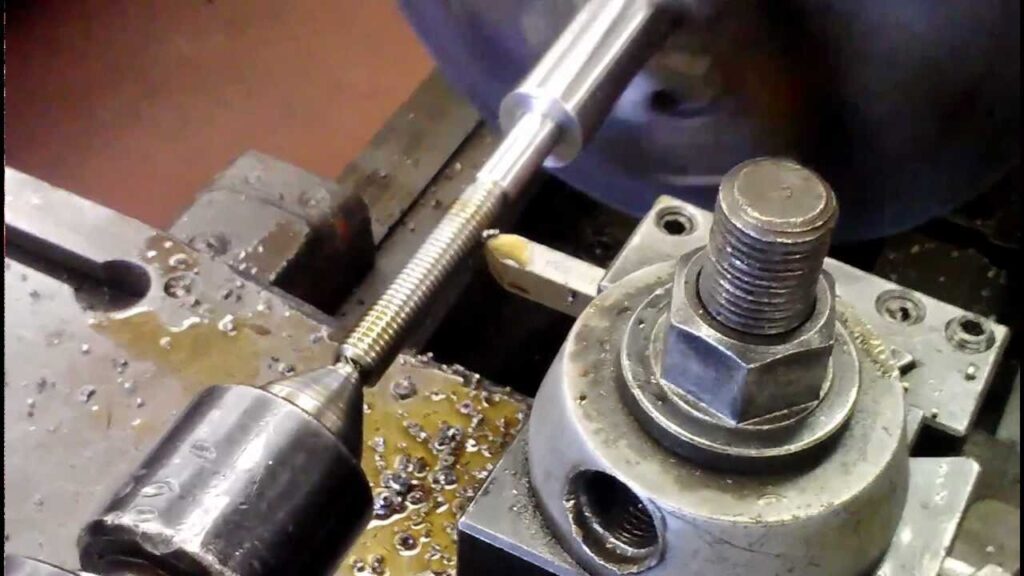
Avantages du filetage à point unique
Le filetage à un point est encore largement utilisé car il offre un meilleur contrôle et une plus grande flexibilité. Voici pourquoi il s'agit d'un choix judicieux dans les conditions réelles d'un atelier.
Précision et exactitude
Cette méthode vous permet de contrôler étroitement la taille et la forme des filets. Vous pouvez régler le pas, la profondeur et la forme directement sur la machine. Cette méthode convient parfaitement aux pièces qui nécessitent des tolérances serrées. Vous pouvez couper le filet, le vérifier et effectuer de petites modifications jusqu'à ce qu'il soit parfaitement ajusté.
Fonctionne pour de nombreux types de fils
Vous pouvez utiliser le filetage monopoint pour couper presque tous les types de filets. Il prend en charge les filetages métriques, unifiés, ACME, trapézoïdaux et même les formes personnalisées. Vous avez besoin de la bonne forme d'outil et des bons réglages de la machine.
Faible coût pour les petits lots
Si vous n'avez besoin que de quelques pièces, cette méthode vous permet d'économiser de l'argent. Il n'est pas nécessaire d'acheter des tarauds ou des matrices spéciales. Vous pouvez utiliser le même outil de coupe et ajuster les réglages de la machine.
Meilleures pratiques pour des résultats optimaux
Pour obtenir des filetages nets et précis, il ne suffit pas d'une bonne configuration. Il faut également prendre de bonnes habitudes pendant la coupe pour que l'outil, la pièce et la machine travaillent ensemble.
Éviter les déviations et les bavardages
La déviation se produit lorsque l'outil ou la pièce à usiner se plie sous l'effet de la pression. Cela entraîne des filets irréguliers ou l'usure de l'outil. Pour l'éviter, veillez à ce que le porte-à-faux de l'outil soit court et utilisez un dispositif rigide.
Le broutage est une vibration qui laisse des marques sur la surface du fil. Utilisez des vitesses plus lentes et réduisez la profondeur par passe si le broutage commence. Assurez-vous que l'outil est bien affûté et qu'il repose sur un support adéquat.
Si nécessaire, utilisez une contre-pointe ou une lunette pour soutenir les pièces longues. Cela permet de maintenir la pièce stable pendant la coupe.
Gestion de la formation et de l'élimination des copeaux
Le filetage produit des copeaux longs et filandreux qui peuvent s'enrouler autour de la pièce ou de l'outil. Ces copeaux peuvent endommager le filetage ou casser l'outil.
Utilisez des brise-copeaux sur l'outil ou réduisez la profondeur de coupe pour briser les copeaux en plus petits morceaux. Appliquer un liquide de coupe pour réduire la chaleur et améliorer l'écoulement des copeaux.
Faites une pause entre les passes pour dégager les copeaux manuellement si nécessaire. Sur les machines à commande numérique, ajoutez un mouvement de rétraction et de temporisation pour laisser tomber les copeaux avant la passe suivante.
Assurer un dégagement et des angles corrects pour l'outil
L'outil doit avoir suffisamment de jeu pour couper proprement sans frottement. Vérifiez les angles de dépouille latérale et finale. S'ils sont trop petits, l'outil traîne et surchauffe.
Adaptez l'angle de coupe au matériau. Un angle de coupe positif permet de réduire la force de coupe sur les métaux plus tendres. Un angle de coupe neutre est préférable pour les métaux plus durs.
Alignez toujours l'outil à l'angle correct par rapport à la pièce à usiner. Même une légère inclinaison peut affecter la forme du filetage et causer des problèmes d'ajustement. Utilisez des jauges ou des indicateurs pour vérifier avant de couper.
Applications dans tous les secteurs d'activité
Le filetage monopoint est utilisé dans de nombreux domaines qui exigent précision, flexibilité et fiabilité. Voici comment différents secteurs l'utilisent en pratique.
Industrie automobile
Dans l'industrie automobile, le filetage monopoint est souvent utilisé pour produire des arbres filetés, des boulons, des composants de moteur et des raccords. Nombre de ces pièces nécessitent des tolérances serrées et des spécifications personnalisées. Il permet également de modifier des pièces existantes ou de fabriquer des composants issus de la rétro-ingénierie.
Ingénierie aérospatiale
Les pièces aérospatiales nécessitent souvent des tolérances serrées et des formes de filetage spéciales. Le filetage monopoint offre le contrôle nécessaire à ces tâches. Il est couramment utilisé pour réaliser fixations de précisionLes pièces d'usure, les bagues filetées et les raccords qui entrent dans la composition des systèmes aéronautiques.
Usinage général
Les ateliers et les petites usines de fabrication s'appuient sur le filetage à point unique pour les pièces courantes. Qu'il s'agisse d'un boîtiers sur mesureCette méthode est fiable lorsqu'il s'agit d'une pièce en petite série ou d'une vis de remplacement. Elle permet un contrôle total de la profondeur, du pas et de la forme du filetage, en particulier sur les matériaux exotiques tels que le titane ou l'Inconel.
Comparaison entre le threading à point unique et d'autres méthodes
Voici une comparaison rapide, côte à côte, du filetage à point unique et des autres méthodes de filetage standard. Utilisez ce tableau pour décider rapidement quelle méthode correspond aux exigences de votre pièce et à vos besoins de production.
| Caractéristique | Filetage à point unique | Tapotement | Fraisage de filets | Filetage des filières |
|---|---|---|---|---|
| Type de fil | Interne et externe | Uniquement interne | Interne et externe | Externe uniquement |
| Flexibilité (fils personnalisés) | Haut | Faible | Haut | Faible |
| Vitesse | Lent | Rapide | Moyen à rapide | Rapide |
| Complexité de l'installation | Modéré | Faible | Haut | Faible |
| Précision | Haut | Modéré | Haut | Faible à modéré |
| Durée de vie de l'outil | Long (insert en carbure) | Plus courte (surtout sur les matériaux durs) | Longues | Court |
| Gamme de matériaux | Large (métaux, plastiques, etc.) | Limité par la force du robinet | Large | Limité |
| Meilleur pour | Prototypes, pièces sur mesure, ajustements serrés | Trous standard, grand volume | Pièces complexes, réparation de fils | Travaux simples, filetage extérieur standard |
Conclusion
Le filetage à point unique offre un moyen précis et flexible de couper des filets internes et externes. Il convient parfaitement aux tailles personnalisées, aux petites séries et aux tolérances serrées. Comparé au taraudage, au fraisage de filets et au filetage à la filière, il vous permet de mieux contrôler la forme et la profondeur des filets. Avec une configuration et un outillage appropriés, vous pouvez obtenir des filetages nets et précis dans une large gamme de matériaux.
Vous avez besoin de pièces filetées sur mesure ou d'un service d'usinage de précision ? Contactez notre équipe dès aujourd'hui et parlons de votre prochain projet.
Hey, je suis Kevin Lee

Au cours des dix dernières années, j'ai été immergé dans diverses formes de fabrication de tôles, partageant ici des idées intéressantes tirées de mes expériences dans divers ateliers.
Prendre contact

Kevin Lee
J'ai plus de dix ans d'expérience professionnelle dans la fabrication de tôles, avec une spécialisation dans la découpe au laser, le pliage, le soudage et les techniques de traitement de surface. En tant que directeur technique chez Shengen, je m'engage à résoudre des problèmes de fabrication complexes et à favoriser l'innovation et la qualité dans chaque projet.

